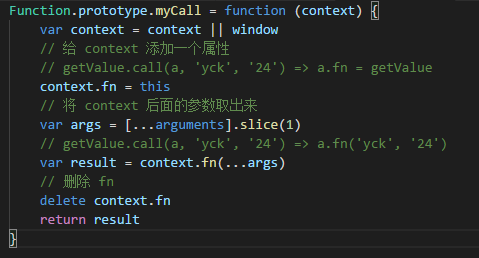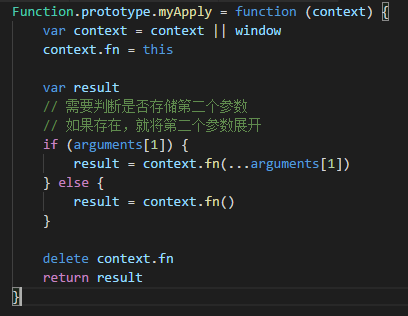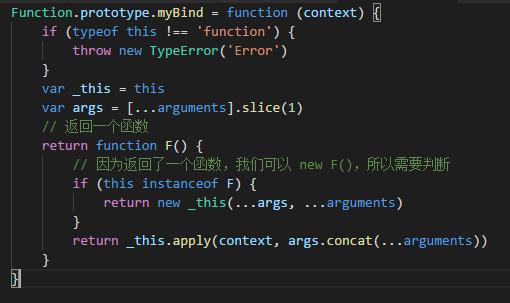#call, apply, bind 区别及模拟实现call apply bind
三者都可以用来改变this的指向,但是在用法上略有不同
首先说一下call和apply的区别
call和apply都是第一个参数是this的指向 ,只是传参的方式不同
call是 第二个以及第三依次类推都是当前函数的参数,每个参数用逗号相隔开
而apply则是将所有的参数以数组的形式来传递的
call(window,参数1,参数1,参数3)
call和apply与bind的区别
call和apply相当于立即执行函数,使用时直接调用,而bind则类似于函数,使用时需要加()调用
同时bind传参方式与call相同,参数都是一个一个传递的
模拟实现call

扫描二维码关注公众号,回复:
3965457 查看本文章


代码
Function.prototype.myCall = function (context) { var context = context || window // 给 context 添加一个属性 // getValue.call(a, 'yck', '24') => a.fn = getValue context.fn = this // 将 context 后面的参数取出来 var args = [...arguments].slice(1) // getValue.call(a, 'yck', '24') => a.fn('yck', '24') var result = context.fn(...args) // 删除 fn delete context.fn return result }
模拟实现apply 方式与call相似只是传参方式不同

代码
Function.prototype.myApply = function (context) { var context = context || window context.fn = this var result // 需要判断是否存储第二个参数 // 如果存在,就将第二个参数展开 if (arguments[1]) { result = context.fn(...arguments[1]) } else { result = context.fn() } delete context.fn return result }
模拟实现bind

代码
Function.prototype.myBind = function (context) { if (typeof this !== 'function') { throw new TypeError('Error') } var _this = this var args = [...arguments].slice(1) // 返回一个函数 return function F() { // 因为返回了一个函数,我们可以 new F(),所以需要判断 if (this instanceof F) { return new _this(...args, ...arguments) } return _this.apply(context, args.concat(...arguments)) } }